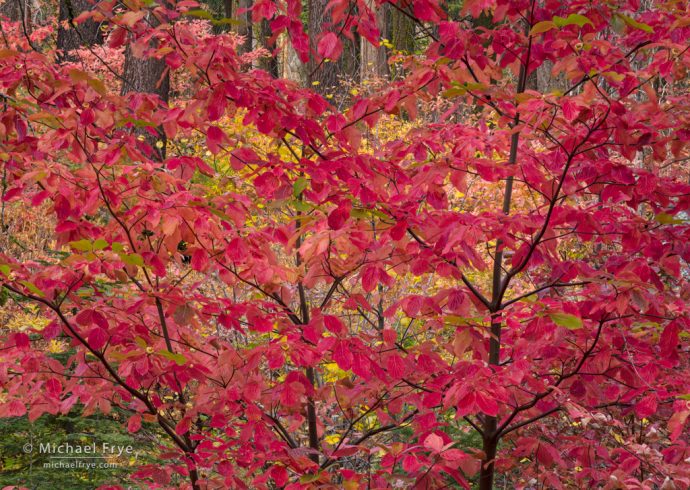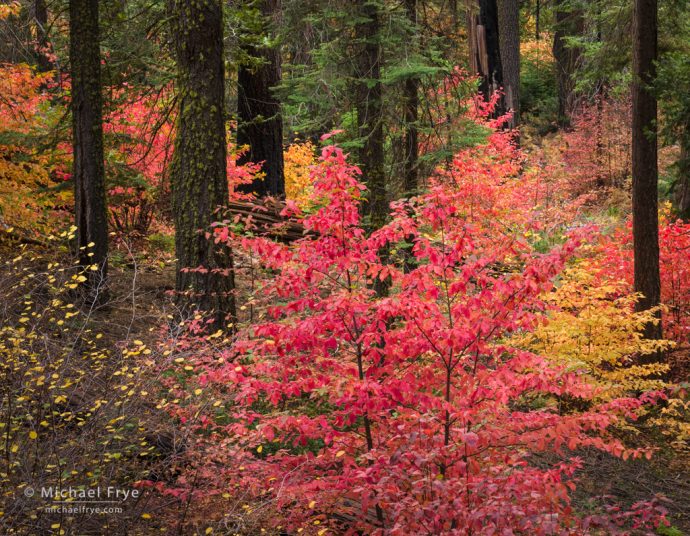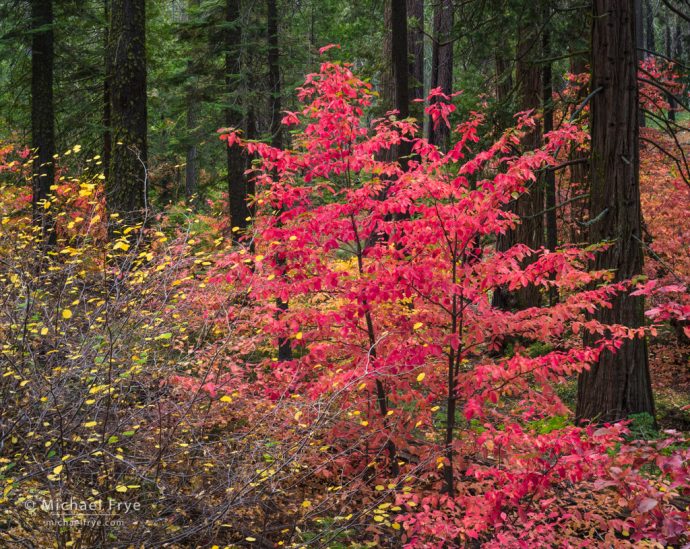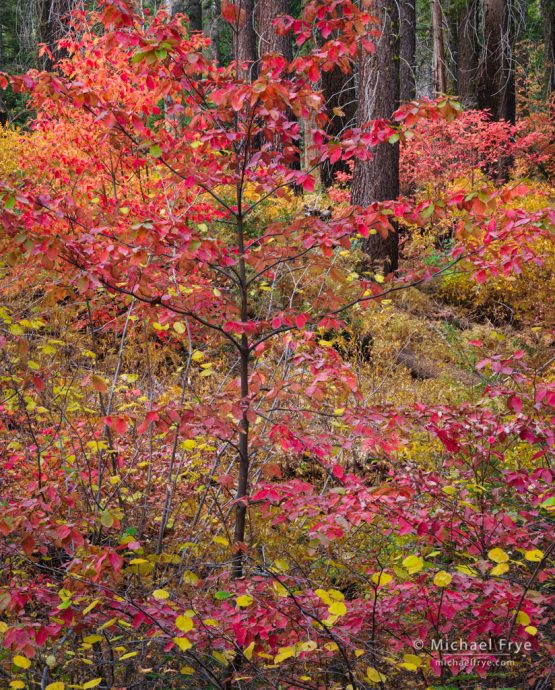Are you good at picking your best photographs while you’re in the field? Do you always know which ones are going to be your favorites, or do you sometimes find that the ones you thought were going to be great aren’t, while others turn out to be better than you thought?
I’ve been making photographs for a long time, and usually have a pretty good idea of when a photograph will work and when it won’t. Sometimes my field judgements are pretty good, and the images that I most look forward to seeing on a bigger screen turn out to be my favorites. But other times I’m surprised. A photograph I was anxious to see on a large monitor turns out to be disappointing, while another one ends up being a favorite.
I’ve had that experience often enough to mistrust my ability to edit my own images in the field. I rarely delete photographs in the camera unless they’re obviously flawed (like being out of focus, or severely under- or overexposed).
And if I find a promising scene, I don’t just make one composition and move on. I know the first idea may not be the best one, so I keep looking. If I have time (if the light’s not changing quickly), I view the scene or subject from every reasonable angle, and photograph every composition that seems promising – not just the one that I think might be the best at the time, because my field judgement about which composition might be the best could be wrong. My motto is, “Leave no compositional stone unturned.”
Recently Claudia and I were photographing a colorful patch of dogwoods near Highway 120, above Yosemite Valley. I’ve included four images here from that afternoon. Which is your favorite?
My favorite is probably the one at the top of this post. But in the field I didn’t think so. At the time, I thought I’d prefer this one:
It’s the same group of trees, but from different vantage points with different lenses. It was already getting dark when I made that second image, with the breeze kicking up, so it would have been easy to call it a day. But as I worked my way back to the car I saw another possibility, and decided I should try it. That ended up being the photograph at the top of the post. I like that one a little bit better because, to my eye, it has better rhythm and flow.
You might prefer that second image, and that’s fine – it’s all subjective. The point is that if I hadn’t kept looking I wouldn’t have made the photograph at the top of the post, and wouldn’t have given myself the option to decide later which one I preferred.
Earlier that afternoon I saw this composition:

Red dogwood, autumn, Yosemite. 184mm, 4 seconds at f/16, ISO 100, polarizer. Four focus-stacked images blended with Helicon Focus.
On the back of the camera, the foreground pattern of branches stood out distinctly, and looked pretty striking. But when I looked at it later, on a bigger screen, it didn’t seem to work as well. I think there are probably too many distractions in the background.
But I kept looking, and a short distance away I found this composition:
At the time I didn’t think much of this one, but it ended up being probably my second-favorite image from that day. It’s pretty busy, but it has a focal point (the stem of the dogwood just left of center), which helps to create a little order out of all the chaos. It’s a riot of color that maybe is just cohesive enough to avoid being too busy and visually confusing.
On that afternoon among the dogwoods I kept working and kept looking in order to give myself as many choices as I could. Because you never know for sure which ones you’ll like best when you review the images later.
— Michael Frye
Related Posts: Dogwood Rebirth; Intimate Landscapes with Wide-Angle Lenses; A Beautiful Autumn Day in Yosemite
P.S. Unfortunately, those higher-elevation dogwoods probably lost a lot of leaves in today’s wind. Meanwhile, it’s kind of a weird autumn in Yosemite Valley. We were in the valley on Thursday, and while there was some color, it was patchy. The big-leaf maples were about 40% yellow and 20% bare, while the rest, strangely, had turned brown. About half the black oaks were also brown, while the rest were a mix of green and gold. It looks like it might be a pretty good year for the cottonwoods, but they were still probably 70% green, so give them another week or two. And the dogwoods also need a bit more time, as they too have a lot of green leaves. (And keep in mind that the valley dogwoods don’t get the vivid reds that the higher-elevation ones do.)
Michael Frye is a professional photographer specializing in landscapes and nature. He is the author or principal photographer of The Photographer’s Guide to Yosemite, Yosemite Meditations, Yosemite Meditations for Women, Yosemite Meditations for Adventurers, and Digital Landscape Photography: In the Footsteps of Ansel Adams and the Great Masters. He has also written three eBooks: Light & Land: Landscapes in the Digital Darkroom, Exposure for Outdoor Photography, and Landscapes in Lightroom: The Essential Step-by-Step Guide. Michael has written numerous magazine articles on the art and technique of photography, and his images have been published in over thirty countries around the world. Michael has lived either in or near Yosemite National Park since 1983, currently residing just outside the park in Mariposa, California.












I prefer the the first photo because of the depth of field of the fall colors. The other photos seem to limit the colors to the area of the main subjects. Your first photo shows the background colors which is missing in the other.
Thanks for chiming in Larry.
Beautiful work Michael! Great article… could it be that our equipment sees the world quite differently than our perception of a scene? We often speak to visualization in the field…but sometimes what we see in our minds eye, we cant replicate with a camera? Always an interesting topic
Thanks Nelson! There’s no doubt that the camera sees the world differently than we see it with our eyes. I’ve long since adjusted to that, to the point where I can visualize how a scene will look as a photograph, rather than how it looks in person, with a good degree of accuracy. But not perfect accuracy. And I also think that when you have time to look at the images at leisure, on a big screen, and have time to do a bit of processing, you see things you don’t see in the field.
Thanks Michael! Anyway, wondering if you’d consider a future article on pre visualization techniques, maybe some tips on building this skill? Tale care
You’re welcome Nelson. I’ll think about that. 🙂
I actually like the third one because it fills up the frame. The reds pop while the yellow provides contrast in the background. Admittedly, the green is missing here, but I like the way the red jumps off the screen. (The first one would come in second!)
Thanks for chiming in Vern.
I prefer the first two because they offer a little more context to my eye. But I go back and forth between the two. And yes, I struggle to know a good shot in the field. Too often I’m wrong. But it sounds like I’m in good company. 🙂
Do you know if the dogwoods coming in the south entrance are similarly blooming now? And are they the same brilliant red? I’ll be driving up next Friday. Thanks.
Thanks for sharing your thoughts John. I can’t give you a first-hand report about the dogwoods near the south entrance. They’re usually similar to the ones along 120, but the Ferguson Fire last year torched some of them, and then we had some wind yesterday, which probably brought down a lot of leaves.
I like the image you used at the top. The bold, red color of the foreground is well balanced by the dark background trees. I’m still trying to figure out woodland/forest compositions, so I’m always happy to see a great example of how to do it.
I always seem to struggle with composition, no matter the subject. And, like you described, I think I know which I’ll like best…only to be surprised later on—surprised because I thought it would be good, but it really isn’t that good. So I’m still working on the quality part too…but I’m getting there.
I did have better luck, this fall, because I looked for more than one possible composition. It definitely made the photography more fun, and at least gave me an opportunity to find a better photograph.
I’m always excited to read one of your new blog posts, or tips and techniques. It’s always filled with something that I can work on, or try out. Now I just have to put it into practice…yup, still working on that too.
Thanks Ryan. I’m glad you find posts like this helpful, and it’s great that you feel that you’re making some progress.
Michael,
I prefer the second image (your first thought for composition). I like the second image best because it does not crop the Dogwoods too tight and it presents the Dogwoods as part of the forest (Pines). The view point seems to bring the Dogwoods more into the center of focus, with the Pine trees in the back. In the first image my eyes keep bouncing from Dogwoods to tree trunks. Composition has always be my greatest challenge. besides color and exposure. I have always appreciated a good Dogwood photograph, Eliot Porter was my favorite, until I saw your work.
Thanks for sharing your thoughts here Dave.